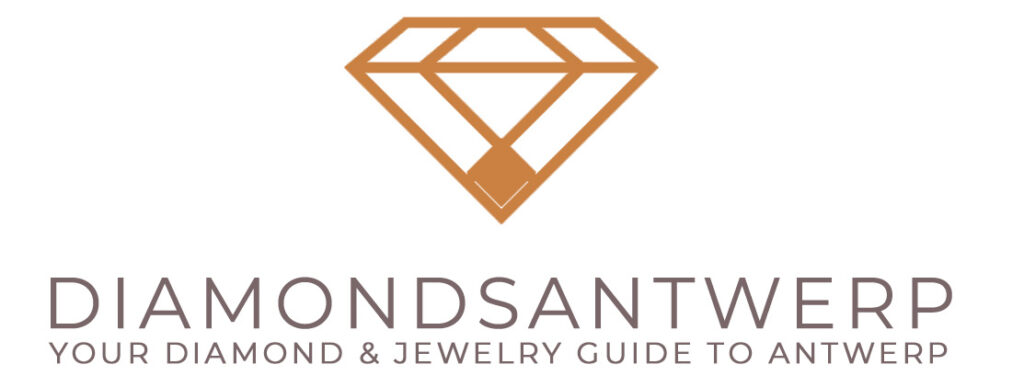Understanding Gemstone Certification: What You Need to Know
When discussing certification for emeralds, sapphires, and rubies, the focus is primarily on evaluating color, clarity, origin, and any treatments that the gemstone has undergone. Here’s a breakdown of the certification process and the most respected laboratories for these colored gemstones.
Color Grade
The certificate needs to specify the hue, tone, and saturation of the gemstone. For emeralds, deep green with vivid saturation is highly valued. For rubies and sapphires, vivid reds and blues are preferred.
Clarity & Inclusions
Colored gemstones often have inclusions, and the certificate will provide a clarity grade based on the visibility and impact of these inclusions. Emeralds commonly have “jardin” (garden-like) inclusions, while rubies and sapphires are graded for their internal and surface characteristics.
Origin Determination
The certificate should indicate the gemstone’s origin, which can significantly impact value. For example:
Emeralds: Colombian, Zambian, and Brazilian origins.
Sapphires: Kashmir, Sri Lanka (Ceylon), and Madagascar.
Rubies: Burmese (Myanmar) rubies are especially prized.
Treatment Disclosure
Most colored gemstones undergo treatments to enhance their appearance. Certificates will indicate if the gemstone has been treated, including:
Emeralds: Commonly treated with oil or resin to fill cracks.
Sapphires and Rubies: Often heat-treated to improve color and clarity. The certificate should specify if heating or other treatments (like beryllium diffusion) have been applied.
Renowned Laboratories for Gemstone Certification and Grading
SSEF (Swiss Gemmological Institute)
SSEF is one of the world’s most trusted gemological labs for premium colored gemstones, especially sapphires, rubies, and emeralds. Known for precision in origin determination, which is crucial for high-value sapphires like Kashmir or Burmese stones. They provide detailed reports that are widely respected in the luxury market and among collectors.
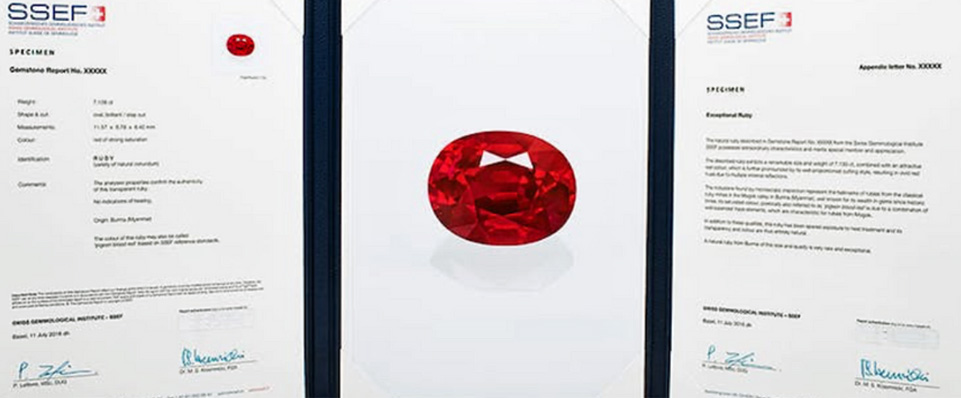
Gübelin Gem Lab
Gübelin is a Swiss-based lab renowned for its detailed reports on the origin and treatments of premium colored gemstones. It’s widely respected among gem collectors and dealers, especially for rubies and sapphires.
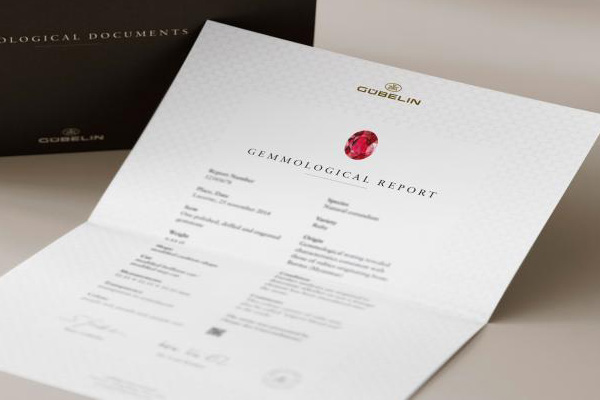
AGL (American Gemological Laboratories):
AGL specializes in colored gemstones, offering comprehensive reports with an emphasis on origin and treatment. Their “colored stone grading reports” are detailed, focusing on subtle aspects like color and clarity.
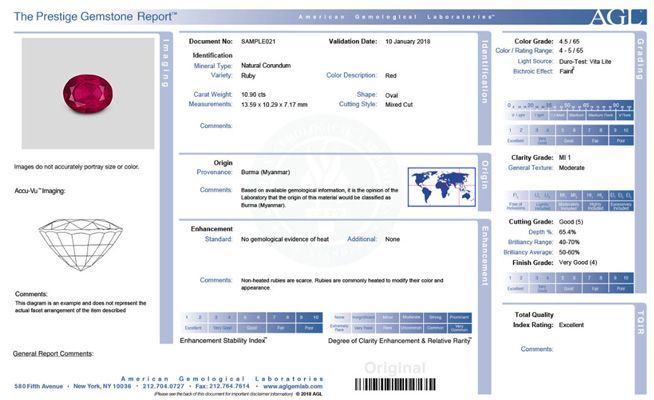
GRS (GemResearch Swisslab)
GRS (GemResearch Swisslab) is a top-tier gemological laboratory, particularly esteemed for its work with rubies, sapphires, and emeralds. Their grading reports are trusted worldwide for their precision, especially in terms of color quality, origin determination, and treatment analysis. For high-value gemstones, a GRS certificate is a mark of authenticity and excellence, making it one of the most recommended labs in the industry.

ALGT (Antwerp Lab for Gemstone Testing)
The Antwerp Lab for Gemstone Testing (ALGT) is a reputable gemological laboratory based in Antwerp. Although it may not have the global recognition of GIA, or SSEF, ALGT has built a solid reputation as a credible lab for gemstone certification. Particularly known for certifying colored gemstones such as emeralds, sapphires, and rubies. ALGT certificate is considered a trustworthy and dependable option.
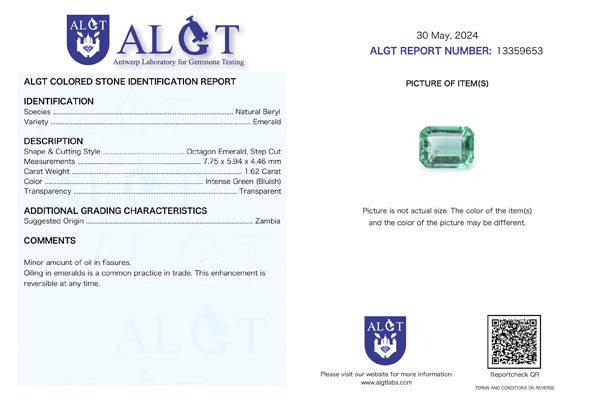
IGI (International Gemological Institute)
The International Gemological Institute (IGI) is one of the largest and most recognized gemological laboratories globally. IGI provides detailed grading and certification for a wide range of gemstones, including sapphires, rubies, and emeralds. Established in 1975, IGI operates with a commitment to precision and transparency in gemstone evaluation
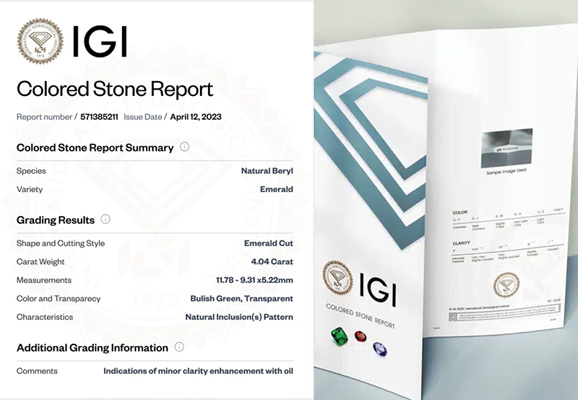
Overview of Gemstone Certification
Gem Identification: Specifies the type of gemstone (emerald, ruby, sapphire).
Color Grading: Detailed description of hue, tone, and saturation.
Clarity and Inclusions: Evaluation of visible internal and external characteristics.
Origin Report: Indicates the country or region of origin (e.g., Colombian emerald, Burmese ruby).
Treatment Disclosure: Full transparency on any enhancements or treatments.
Laboratory’s Seal and Security Features: Ensure the report’s authenticity.
Note: For the highest value sapphires, rubies and emeralds SSEF, Gübelin, and GRS are particularly recommended for their detailed and trusted grading of colored gemstones.
DiamondsAntwerp.com
- sales +32 473 21 02 44
- sales +32 473 21 02 44
- SUPPORT@diamondsantwerp.com
- NV JOAILLERIE FRÈRES FROHMANN, Pelikaanstraat 54, 2018 Antwerp, Belgium
